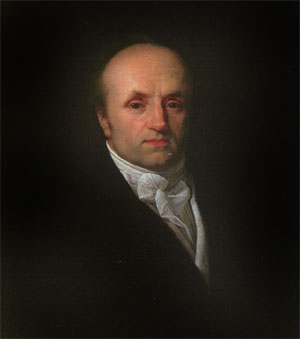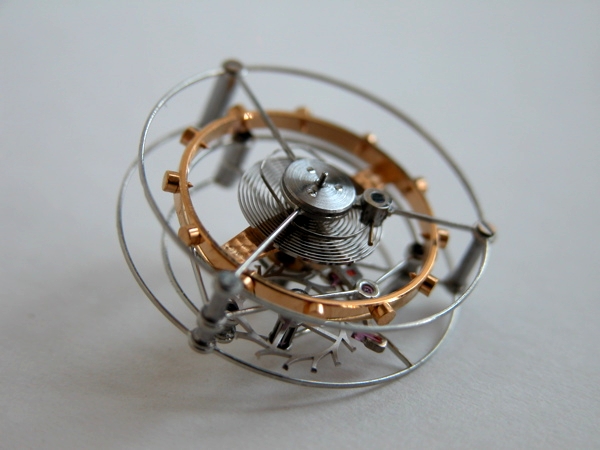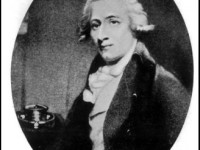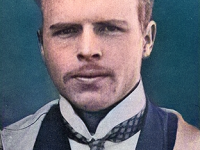
Abraham-Louis Bréguet (1747-1820)
On January 10, 1747, Swiss horologist Abraham-Louis Breguet was born. In his lifetime he was considered the leading watchmaker of his day because of his artistic as well as technical skill. His innovations included a self-winding or “perpétuelle” watch (1780), the gong spring which decreased the size of repeater watches, and the first anti-shock device or “pare-chute“, which improved the reliability of his watches while making them less fragile. Of course Swiss watches are considered among the best in the world. Abraham-Louis Bréguet is the founder of the Bréguet company, which is now the luxury watch division of the Swiss Swatch group.
Early Years
Breguet was born in Neuchâtel, Switzerland to Jonas-Louis Breguet and Suzanne-Marguerite Bollein, descendants of French Protestants who fled to Switzerland after the revocation of the Edict of Nantes in 1685. Breguet’s father’s died in 1758, when he was ten, and his mother remarried to Joseph Tattet, who came from a family of watchmakers. Tattet had a showroom in Paris and in 1762 to take up the family trade, young Brequet was sent to be apprenticed to an unknown Versailles master watchmaker. Breguet soon “astonished” his master with his aptitude and intelligence, and to further his education he took evening classes in mathematics at the Collège Mazarin under Abbé Marie, who became a friend and mentor to the young watchmaker. Through his role as tutor to the dukes of Angoulême and de Berri, Abbé Marie was able to arrange for Breguet to be introduced to King Louis XVI of France, and the king’s interest in mechanics led to many royal commissions for the rising watchmaker, including a perpetuelle (self-winding watch), with which the king was especially pleased.
Horological Innovations
Unfortunately, Marie met a tragic end, either through murder or suicide, and soon after Breguet lost both his mother and his step-father, leaving him to support himself and his younger sister. How he managed this in the period between his parents’ deaths and the establishment of his business is unknown. Breguet was allowed to marry in 1775 after finishing his apprenticeship. He and his bride, Cécile Marie-Louise L’Huillier, set up home and business at 39 Quai de l’Horloge in Paris. Abraham-Louis Breguet invented innovative escapements, including the tourbillon, automatic winding mechanisms, and the overcoil (an improvement of the balance spring with a raised outer coil). Within ten years Breguet had commissions from the aristocratic families of France and even the French queen, Marie-Antoinette. Cécile died in 1780.

An assembled tourbillon, clearly showing balance wheel, pallet fork and escape wheel (photo: wikipedia)
Breguèt – The Master Watchmaker
In 1784 Abraham-Louis Brequet wass accepted into the guild as a master watchmaker and in 1785 he became purveyor of King Louis XVI. After the beginning of the revolution, in 1793, Breguet fled from France back to Neuchâtel. During a stay in London, contacts were made to the chronometer maker John Arnold, Europe’s leading watch and clockmaker, from which developed a friendship. In 1795, when the political scene in France stabilized, Breguet returned to Paris. Breguet did not staff his workshops in the traditional way, with unskilled apprentices, but instead sought out the finest available watchmakers in Paris, whom he employed to make watches to his own designs.
Later Life
For the sister of Napoleon I and Queen of Naples, Caroline Murat, Abraham-Louis Breguet built a watch that could be worn on the wrist, and thus created probably the first wristwatch in the world almost a century before it became common. Breguet became a member of the Board of Longitude in 1814 and the following year gained an official appointment as chronometer-maker to the French Navy. He entered the French Academy of Sciences in 1816 as a full member, and received the Chevalier of the Legion of Honour from the hands of Louis XVIII in 1819. Breguet’s name is one of the 72 names inscribed on the Eiffel Tower. During his lifetime, Breguet’s company produced about 17,000 watches. Because of his minute attention to detail and his constant experimentation, no two Breguet pieces are exactly alike.
The business grew from strength to strength, and when Abraham-Louis Breguet died in 1823 it was carried on by his son Antoine-Louis.
The History of the Tourbillon, by Emmanuel Breguet and Jeffrey Kingston, [5]
References and Further Reading:
- [1] Abraham-Louis Bréguet at Encyclopedia Britannica
- [2] Eric-André Klauser: Breguet, Abraham Louis. In: Historisches Lexikon der Schweiz.
- [3] More articles about Horology at SciHi Blog
- [4] Abraham-Louis Bréguet at Wikidata
- [5] The History of the Tourbillon, by Emmanuel Breguet and Jeffrey Kingston, 2021, Horological Society of New York
- [6] Watkins, Richard. “The Origins of Self-Winding Watches, 1773 to 1779”. pages 110-121, 362-370.
- [7] Timeline of Watchmakers, born before 1850, via Wikidata






Pingback: Whewell’s Gazette: Year 3, Vol. #22 | Whewell's Ghost